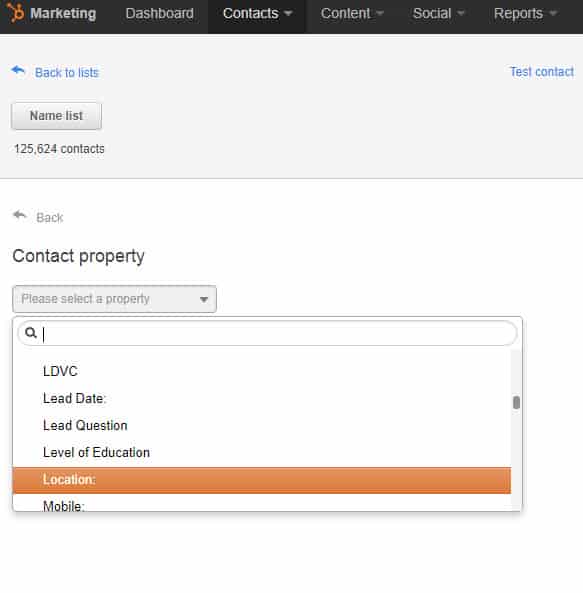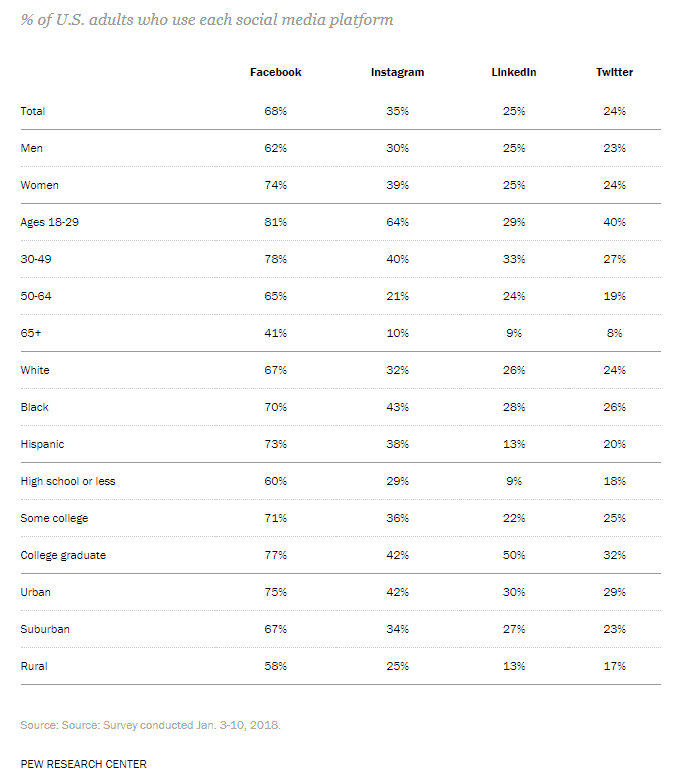
While everyone is different, it’s likely that most of your current student body share a few key characteristics. Take a broad enough view, and important trends emerge: a predominance of individuals at your institution of a particular national origin, shared professional ambitions and academic concerns, trends in applicant ages, etc.
This is all valuable information. By applying it to the creation of “personas”, which are fictional profiles of individuals representative of professional, demographic, and educational characteristics shared by large proportions of a student population, it’s possible to create more personalized, targeted marketing content across a range of channels.
Content created to address these personas can be incredibly effective. Research collected by marketing agency Single Grain has shown that crafting personas well can increase conversion rates by up to 10%, email click-through rates (CTRs) by up to 14%, and advertising CTRs by up to 50%.
Curious about what kinds of digital marketing efforts might be improved through the use of student personas? Read on to see a few examples. Note that if you’re unsure about how to create an effective persona for your school, you might want to check out this handy guide to persona creation first.
Student Personas Can Help You Create Stronger Content
Content is a huge part of the digital marketing world. It’s what populates websites, blogs, emails, and social media channels and gives users a reason to visit them in the first place. Executed well, content can be informative, entertaining, or thought-provoking. It can provide prospective students with a snapshot of your school’s identity and make them eager to join your institution’s community.
The tricky thing about content is that consuming it is very much a subjective experience – one person’s treasure is another person’s junk, and vice versa. Everything from tone, to vocabulary, to images, to the very topics covered in a piece of content can mean the difference between a pleasant or an off-putting experience.
How do you ensure your content is received well by your audience? The main starting point is by using personas. Writing for a general audience, it can be hard to know what to make your content sound like and what topics to have it cover. Likewise, it can be difficult to find the right design and visuals for your work. By catering to specific student personas, these steps become much easier. For example, if your school’s primary student persona is an 18-25 year old, for instance, you can deduce that more a casual, informal approach would be appropriate than if your persona was a 35-50-year-old. You can also use your personas’ interests and background to guide content creation. If your persona is an international student interested in studying oceanography, for instance, content about the latest news in oceanic studies or recommendations for nearby sightseeing could be effective.
Example: This blog post from Indiana University Bloomington would be a great fit for personas just starting out on their university studies.

Personas can be even more valuable when applied to a channel like email marketing. Email marketing makes great use of segmentation, which is a process that involves breaking the overall audience into smaller groups (segments) according to particular shared interests or attributes. Each segment then receives email content that is tailored to their particular shared qualities and therefore more likely to appeal to their particular wants. Qualities that can be used to segment a student audience can include anything from user location, to education level, to program of interest, etc.
All of these kinds of qualities that might be represented in email segments can also be represented in personas, meaning persona creation is an excellent starting point for future segmentation of your email marketing initiatives.
Example: Marketing automation platforms like Hubspot allow you to create mailing lists for your email campaigns that segment your contacts according to any number of persona-specific parameters, such as their location and level of education.

Better still, referring to the same persona for the creation of website content and email marketing material can help you ensure a level of consistency and continuity for your audience. This is something that can improve the level of trust that prospects feel for your school, which can be an incredibly important factor in encouraging them to enroll.
Your School’s Social Media Presence Should be Tailored to Your Student Personas
While all schools should have an active social media presence, it can be less clear cut which social media platforms should be leveraged by a given institution. Invest in creating a presence across too many social media platforms and you run the risk of an insufficient return on the investment of your time and money creating content for those that are a poor fit for your student demographic. Devote your attention to too few platforms, or the wrong ones, and you risk missing out on building relationships with the very prospects you wanted to reach with your social media efforts.
Student persona development can be very instructive in this regard, though, as qualities like age, gender, education, and more all play into an individual’s likelihood to be present on a particular network. To get an idea of how audiences break down on the most popular social media sites in the western world, take a look at the following data from Pew Internet’s Social Media Fact Sheet, which looks at American users of Facebook, Instagram, LinkedIn, and Twitter.

There is much that can be gleaned from this information. Facebook, for instance, is a pretty safe bet for communicating with just about every demographic, so it should probably have a place in most schools’ social media marketing strategies. Twitter, on the other hand, seems to skew relatively young, so schools hoping to attract older professionals or career changers might not gain much by building out a presence on the site.
Example: Thanks to its younger audience demographics, large universities likes Rutgers University regularly attract a lot of engagement through Twitter. Note how the visuals and messaging of this post are a bit more causal and informal that you might expect to better connect with its targeted persona.

Personas can also help you think a little bigger than just developing presences on standard social networks in the west. Consider, for example, this excerpt from following persona for an English language school.

From this example, we can see that the school anticipates welcoming many of its students from a few countries and regions: Columbia, Brazil, Europe, and Korea. There are regional variations in social media usage to consider in order to appeal to these prospects. For instance, according to Statista, 91% of Brazilians are WhatsApp users, and in Korea, many millions of people take part in online communities on the Naver Cafe and Naver Band platforms.
Example: Murray State University in Murray, USA displays its WhatsApp number prominently on its International Students page. Persona development can help you determine how effective promoting specific social channels like this will be with your target audience.

Creating a presence on these sites is an important opportunity to explore for the institution in this example, as it could allow them to better meet their prospective student populations on their preferred virtual grounds. Take a similar approach for your institution, and use personas to drive which social networks you elect to build a presence on, and you could enjoy similar benefits in your efforts at outreach.
Student Personas are Perfect for Targeted Social Ads
The strength of social media advertising largely lies in the ease with which it can be targeted to very specific audiences. Ads can be directed to users in specific geographic regions, to particular genders, to different levels of education or demonstrated interests, and to many more subsections of the diverse global population on the web. It’s no coincidence that the parameters in digital advertising platforms and the details included in most professional persona creation processes align so closely – there’s no better or faster way to produce effectively targeted advertising than to refer to a persona.
To illustrate how this should work, here’s another example persona, this time for a business school.

There are a number of pertinent details here that can help with creating ads targeted at the type of prospect the school wants to attract. From this persona, we can gather an age range, career status, their family situation, and other useful information. It’s also safe to assume that targeting individuals with an interest in business would be an appropriate move for this school. All of these details can be input into a social media ads manager’s targeting parameters when setting up a campaign.
Here’s an example of what this might look like in Facebook Ads Manager.

As with web and social content generation, persona documents are also excellent references for writing effective copy and choosing images that are likely to be compelling to your intended audience. Good persona documents will include a wealth of information about prospective student’s interests and concerns, and writing copy and choosing images that speak to these points is an excellent way to make your advertising stand out and draw user engagement.
Example: This Instagram ad for gap year programs offered by Technion International, Israel, uses text and images that strike the perfect note for the school’s young audience.

All of these points, from targeting to ad creation, could be accomplished without the use of personas. There’s a good chance, however, that the targeting wouldn’t be as solid and that too much time would be spent trying to come up with ideas that are appropriate for the audience. With a persona, the process is greatly streamlined, saving recruitment teams time and resources in both the short and long term.
Pay-Per-Click Advertising is Most Effective With Detailed Student Personas
Pay-per-click (PPC) advertising can be an incredibly effective way to reach prospective students for all kinds of educational institution, as ads can be targeted to appear only to users who search for specific keywords. This means, however, that it is crucial that you select the right keywords alongside which your ads will appear in search.
There are a number of tools, like Google’s Keyword Planner, that can be used to gather useful information about the frequency with which a given keyword is searched, but search volumes alone won’t give you the complete picture. Some keywords might receive a high volume, for instance, but not be properly related to the type of prospect you hope to attract to your school.
Having established student personas can help you sort through proposed keywords and select the right options to send ads to. For instance, if your institution is renowned for its arts education programs and is located in Manchester, you might want to appear in searches for “arts schools in Manchester” or “art schools in Northern England”, as well as similar searches.
Similar to social media advertising, it’s also a good idea to rely on personas during the copywriting component of PPC advertising. Knowing what it is that prospective students are likely to care or be concerned about can help you use the small amount of text included in PPC ads in Google and Bing more economically. You might use the text to concisely emphasize career outcomes, the style of education, or other details important to your prospects.
Example: This PPC ad for a Data Science Masters Program from Simplilearn appeared in a search for “data science training.” Its repeated reference to “industry” and mentorship do a good, efficient job of speaking to the established professional demographic that tends to gravitate toward this kind of training.

Simply put, student persona creation can be an incredibly rewarding process, with the potential to offer your team valuable guidance in your marketing strategy that can save a great deal of time and effort. By taking the time to create personas just once, your institution can gain insight that will improve many areas of its digital marketing and recruitment efforts for years to come.






